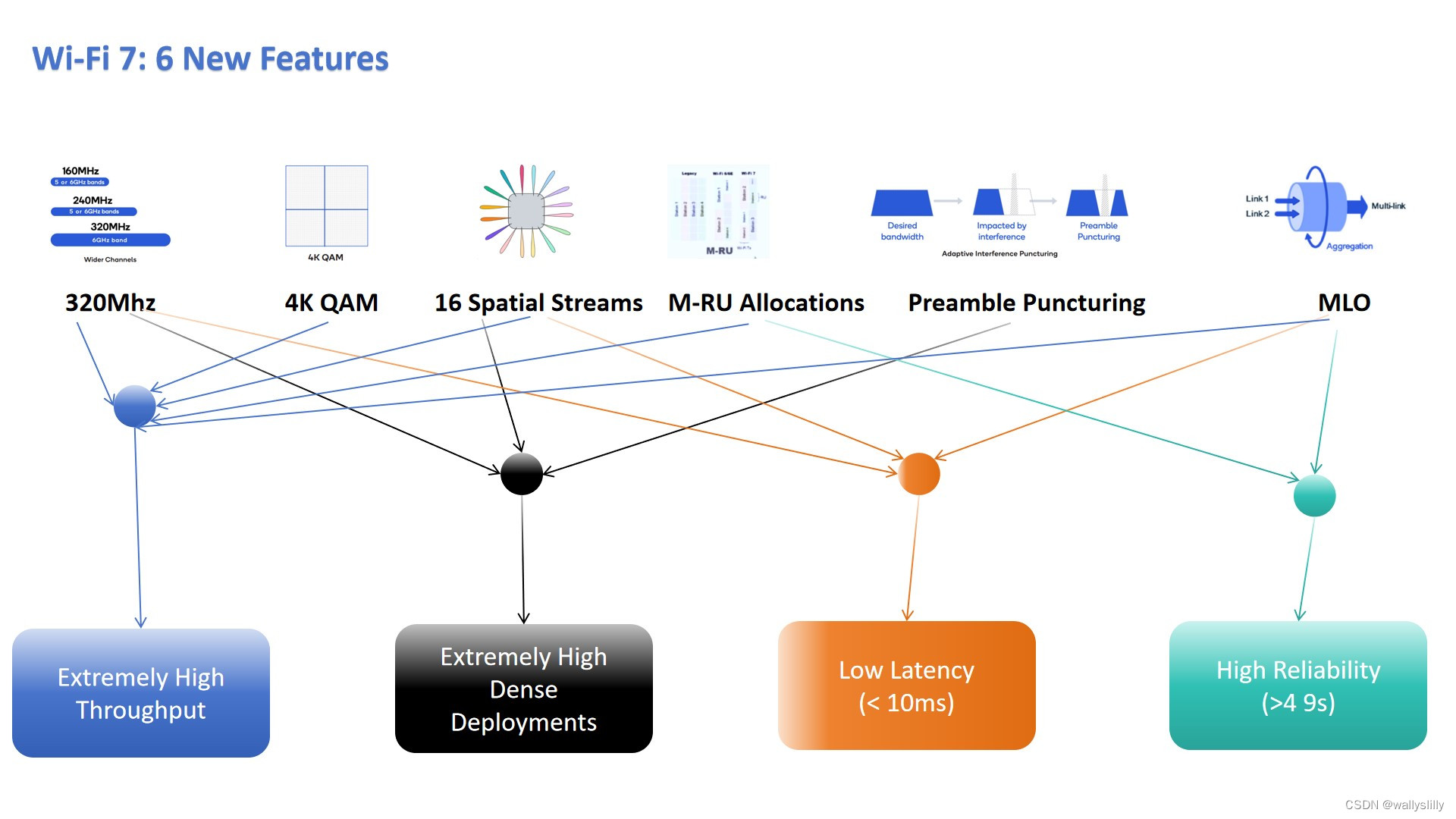WiFi 7 Technology: Market Growth, Opportunities, and Challenges
Introduction
As wireless network technology evolves, the WiFi standard continues to advance. Following WiFi 6, WiFi 7 (802.11be) is the focal point of the next generation of wireless connectivity technology. WiFi 7 offers significant improvements in speed and efficiency and introduces numerous new features that will profoundly impact future network experiences. This article explores the current state of the WiFi 7 device market, its future growth prospects, opportunities, and challenges.
Overview of WiFi 7 Technology
WiFi 7 provides several advancements over its predecessors, including:
Higher Speeds: WiFi 7 can achieve a maximum transmission speed of up to 46 Gbps, more than four times that of WiFi 6.
Lower Latency: Through multiple low-latency mechanisms, WiFi 7 performs better in real-time applications such as gaming and video conferencing.
Improved Multi-Device Performance: Supporting Multi-Link Operation (MLO), WiFi 7 can use multiple bands (2.4GHz, 5GHz, 6GHz) simultaneously, enhancing network efficiency and stability.
Enhanced Security: WiFi 7 incorporates the latest encryption technologies, further securing user data.
Market Growth
Current Market Status
As of the end of 2023, the WiFi 7 device market is in its early stages, primarily led by early adopters and technologically advanced enterprises. According to market research firms, the global WiFi 7 device market size was approximately $1 billion in 2023.
Future Growth Projections
Industry forecasts suggest that the WiFi 7 device market will experience high growth over the next five years. By 2028, the global WiFi 7 device market is expected to reach $15 billion, with a compound annual growth rate (CAGR) of around 45%. This rapid growth is driven by several factors:
Demand for Technological Advantages: WiFi 7's high speed, low latency, and high stability attract many enterprises and consumers, particularly in high-bandwidth application areas such as AR/VR, cloud gaming, and 4K/8K video streaming.
Wide Application Scenarios: WiFi 7 will see broad application beyond homes and businesses, including in smart cities, industrial internet, telemedicine, and other emerging fields, further driving market demand.
Device Upgrade Cycle: As WiFi 7 technology becomes more widespread, many homes and businesses will gradually replace old equipment with new WiFi 7-compatible devices, boosting market size.
Opportunities
Broader Applications: In the coming years, WiFi 7 devices will be applied in more fields, including smart cities, industrial internet, telemedicine, and more, driving digital transformation across various industries.
Coordination with 5G: WiFi 7 and 5G will form the future wireless network ecosystem, complementing each other to provide seamless high-speed connectivity experiences.
Cost Reduction: As technology matures and mass production scales up, the cost of WiFi 7 devices will gradually decrease, making them more accessible.
Ecosystem Development: Hardware and software vendors will build a comprehensive ecosystem around WiFi 7 technology, including WiFi 7-supported terminal devices, supporting software, and application services.
Challenges
Despite the promising prospects, the WiFi 7 device market faces some challenges:
High Costs: The initial cost of WiFi 7 devices is relatively high, which may affect adoption rates among some consumers and businesses.
Technical Compatibility: The promotion of new technology requires resolving compatibility issues with existing devices and networks to ensure a seamless transition for users.
Standard Refinement: While the WiFi 7 standard is mostly established, continuous refinement and optimization in practical applications are necessary.
Conclusion
The WiFi 7 device market is in a rapid growth phase, expected to experience explosive development in the coming years. The demand for high-bandwidth applications, the increase in IoT devices, and the need for enterprise digital transformation are the main drivers of market growth. However, the market also faces challenges related to costs and technical compatibility that need to be addressed. Overall, the future of the WiFi 7 device market is bright, poised to become an essential component of the wireless network technology landscape.
About Wallys
With 16 years of expertise, Wallys specializes in OEM/ODM services for WiFi products, including Routerboards, WiFi cards, antennas, and access points across WiFi 5, 6, and 7 standards. We excel in software development and hardware customization, leveraging Qualcomm chipsets like IPQ9574 and IPQ6010 for superior performance. Many of our products support open-source platforms such as OpenWrt and OpenWiFi, enabling customizable solutions tailored to client needs.
For more details or inquiries about Wallys and our WiFi product offerings, please contact us at sales1@wallystech.com.
PRODUCTS_Wallys Communications (Suzhou ) Co., LTD
